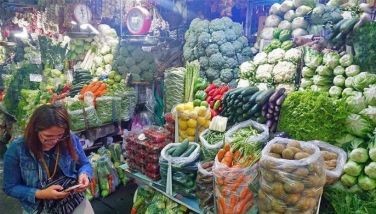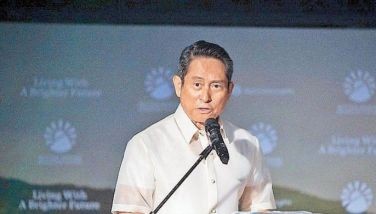Philrice develops new hybrid variety
July 11, 2006 | 12:00am
The National Seed Industry Council (NSIC) has approved for commercialization, the country’s first marker-aided bred, high-yielding, bacterial leaf-blight resistant, hybrid rice variety. Developed by the Philippine Rice Research Institute (Philrice)," the new variety" shows great promise in terms of yield, in grain quality and in reducing, if not completely eliminating bacterial leaf blight disease that attacks rice farms especially during the wet season."
Dr. Leocadio S. Sebastian, executive director of Philrice, said the new variety, called NSIC Rc 142 or Tubigan 7, was developed by combining two high-yielding rice varieties, the IRC4 and PSB Rc 14. He said the marker-aided selection breeding employed by Philrice plant breeders show the NSIC Rc 14 is more adaptable under direct wet-seeded culture, but can also be used under transplanted culture.
He added that NSIC Rc 142 which was tested under various conditions in selected sites nationwide for three and a half years, yielded higher than most existing hybrid rice varieties that yield an average of 5.5 metric tons per hectare.
"This variety is already being planted by farmers, and its expanded use would be advantageous to farmers because NSIC Rc 142 is early maturing, just 105 to 112 days. Its grains have good milling quality and physical attributes, as well as low amylase content and good eating quality," said Sebastian.
Another benefit for farmers shifting to this variety is that it is also resistant to major pests such as bacterial leaf blight, sheath blight, stemborers, green leafhopper and brown planthopper.
Sebastian said this new variety, along with other hybrid rice varieties currently being tested by Philrice, should boost the Department of Agriculture’s (DA) goal of becoming self-sufficient in rice and do away with costly importations by 2010.
Despite inadequate budget support, DA’s Ginintuang Masaganang Ani (GMA) rice program is banking on the expansion of the hectarage devoted to hybrid rice planting.
Agriculture Secretary Domingo F. Panganiban announced earlier this year that self-sufficiency in rice is achievable by late 2009 or early 2010.
"We are confident that if we are able to properly carry out our rice production program and get the support that we need, we will be able to hit a 99.9-percent self-sufficiency in rice by 2009, and possibly even have surplus production," said Panganiban, adding that increasing rice production is being prioritized to meet a growing population.
Dr. Leocadio S. Sebastian, executive director of Philrice, said the new variety, called NSIC Rc 142 or Tubigan 7, was developed by combining two high-yielding rice varieties, the IRC4 and PSB Rc 14. He said the marker-aided selection breeding employed by Philrice plant breeders show the NSIC Rc 14 is more adaptable under direct wet-seeded culture, but can also be used under transplanted culture.
He added that NSIC Rc 142 which was tested under various conditions in selected sites nationwide for three and a half years, yielded higher than most existing hybrid rice varieties that yield an average of 5.5 metric tons per hectare.
"This variety is already being planted by farmers, and its expanded use would be advantageous to farmers because NSIC Rc 142 is early maturing, just 105 to 112 days. Its grains have good milling quality and physical attributes, as well as low amylase content and good eating quality," said Sebastian.
Another benefit for farmers shifting to this variety is that it is also resistant to major pests such as bacterial leaf blight, sheath blight, stemborers, green leafhopper and brown planthopper.
Sebastian said this new variety, along with other hybrid rice varieties currently being tested by Philrice, should boost the Department of Agriculture’s (DA) goal of becoming self-sufficient in rice and do away with costly importations by 2010.
Despite inadequate budget support, DA’s Ginintuang Masaganang Ani (GMA) rice program is banking on the expansion of the hectarage devoted to hybrid rice planting.
Agriculture Secretary Domingo F. Panganiban announced earlier this year that self-sufficiency in rice is achievable by late 2009 or early 2010.
"We are confident that if we are able to properly carry out our rice production program and get the support that we need, we will be able to hit a 99.9-percent self-sufficiency in rice by 2009, and possibly even have surplus production," said Panganiban, adding that increasing rice production is being prioritized to meet a growing population.
BrandSpace Articles
<
>
- Latest
- Trending
Trending
Latest


























